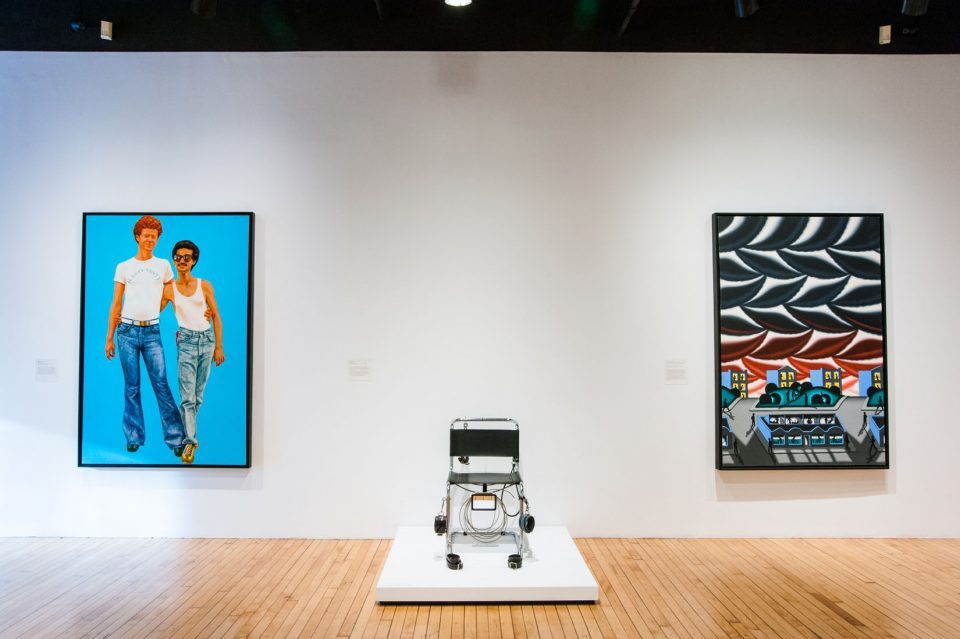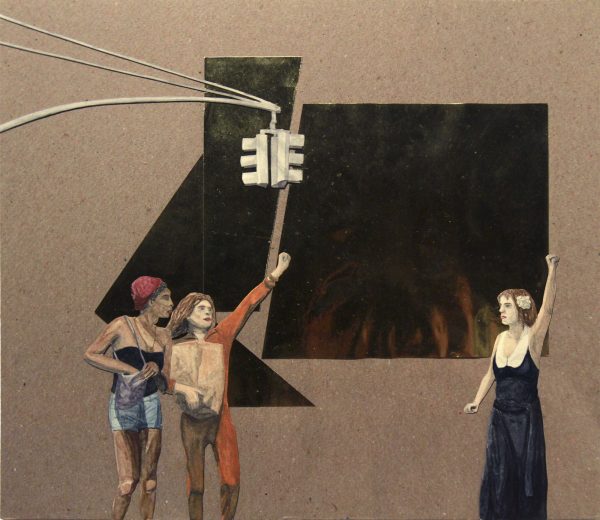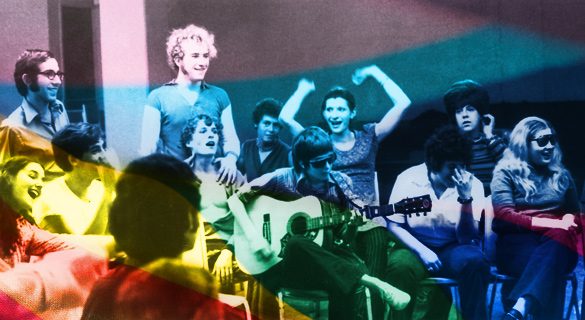Raids were not uncommon in New York during the 1960s. However, in the early hours of June 28, 1969, at the Stonewall Inn, the crowd erupted. People hurling insults swiftly changed to coins, beer cans, and bricks. Reinforcements and supporters alike rushed to the scene; joining in the chaos. Partially demolished, Stonewall, reopened the next night. The rioters returned, as well as the police, and for six days after, the melee continued. Half armed with protest songs, the others armed with tear gas. The news barely covering the fiasco on Christopher Street while it raged on. However, the damage completed, and the course of history was forever changed, the movement would not be silenced.
Artist fight censorship on many levels. While the march continues today, history has shown us constant examples of resistance. As the 50th anniversary of Stonewall comes to a close, here are a few exhibitions highlighting the key intersection of art and activism in the community.
Grey Art Gallery: Art After Stonewall

Art after Stonewall, 1969–1989 is an exhibition examining the impact on the visual culture of the LGBTQ liberation movement. The show includes works by openly LGBTQ artists such as Scott Burton, Vaginal Davis, Lyle Andy Warhol. The show includes straight-identified artists such as Alice Neel, Jean-Michel Basquiat, Lynda Benglis, and Kiki Smith. Highlighting terms of their engagement with the newly emerging queer subculture. Divided into two parts, the show is on view at the Leslie-Lohman Museum of Gay and Lesbian Art.
Although the Stonewall riots marked a turning point in queer civil rights, a decade later the struggle for liberation was facing extreme backlash. There was also tension within the movement, which unfortunately was not immune from perpetuating sexism, racism, and transphobia.
Nobody Promised You Tomorrow

Nobody Promised You Tomorrow: Art 50 Years After Stonewall explores the profound legacy within contemporary art and visual culture. Its title is inspired by transgender artist and activist Marsha P. Johnson. Her rallying cry underscores both the precariousness and the vitality of LGBTQ+ communities.
The exhibition presents twenty-eight LGBTQ+ artists born after 1969. Their works confronting the political condition we face today. These artists engage the overlapping themes of revolt, care, desire.
Love & Resistance: Stonewall 50

Illustrating the history of the LGBTQ+ movement through the photographs of Kay Tobin Lahusen and Diana Davies, two pioneering photojournalists is the Love & Resistance Stonewall 50 exhibition. The exhibition captures the pivotal events of this era.
Providing historical context for the city’s gay rights movement the exhibition uses photographs taken during the 1960s and ’70s. These are “among the great queer treasures of the New York Public Library”. Inviting attendees to learn about the beginnings of the modern LGBTQ movement. Including, topics such as culture, and activism today.
New York Historical Society: Stonewall 50
Letting Loose and Fighting Back: LGBTQ Nightlife Before and After Stonewall focuses on ways in which nightlife has been critical in shaping LGBTQ identity. Examining the building of community, developing political awareness, and fostering genres of creative expression. Beginning with gay bars in the 1950s and 1960s and continuing through the rise of the gay liberation movement as they serve as a refuge of expression in the LBGTQ community.

By the Force of Our Presence: Highlights from the Lesbian Herstory Archives. Focuses on the lesbian lives before and after Stonewall. The exhibition features photographs, books and manuscripts, periodicals, posters, and other various contributions from the lesbian community.
Also at the New York Historical Society, A special installation: Say It Loud, Out and Proud: Fifty Years of Pride. The exhibition features imagery from New York City Pride marches and other LGBTQ protests from the 1960s to the present day.
Revolutions, for the most part, are not televised. Rarely do they receive support from around the globe. However, that support has been hard fought, and every inch is well earned. These exhibitions are a small reminder of how far we’ve come as a global community in supporting each other’s rights to freedom and love. And still how far we have to go.